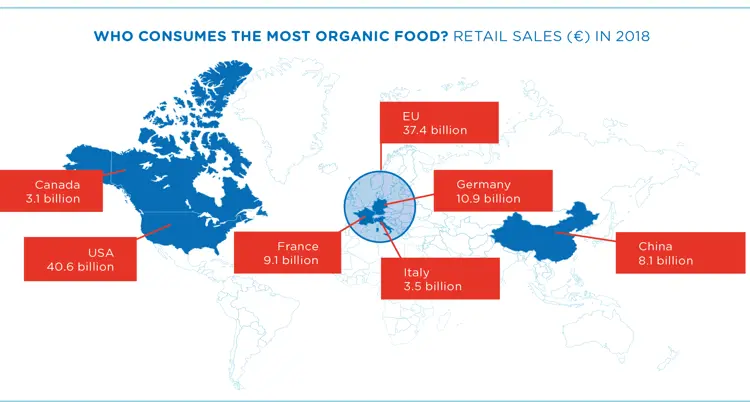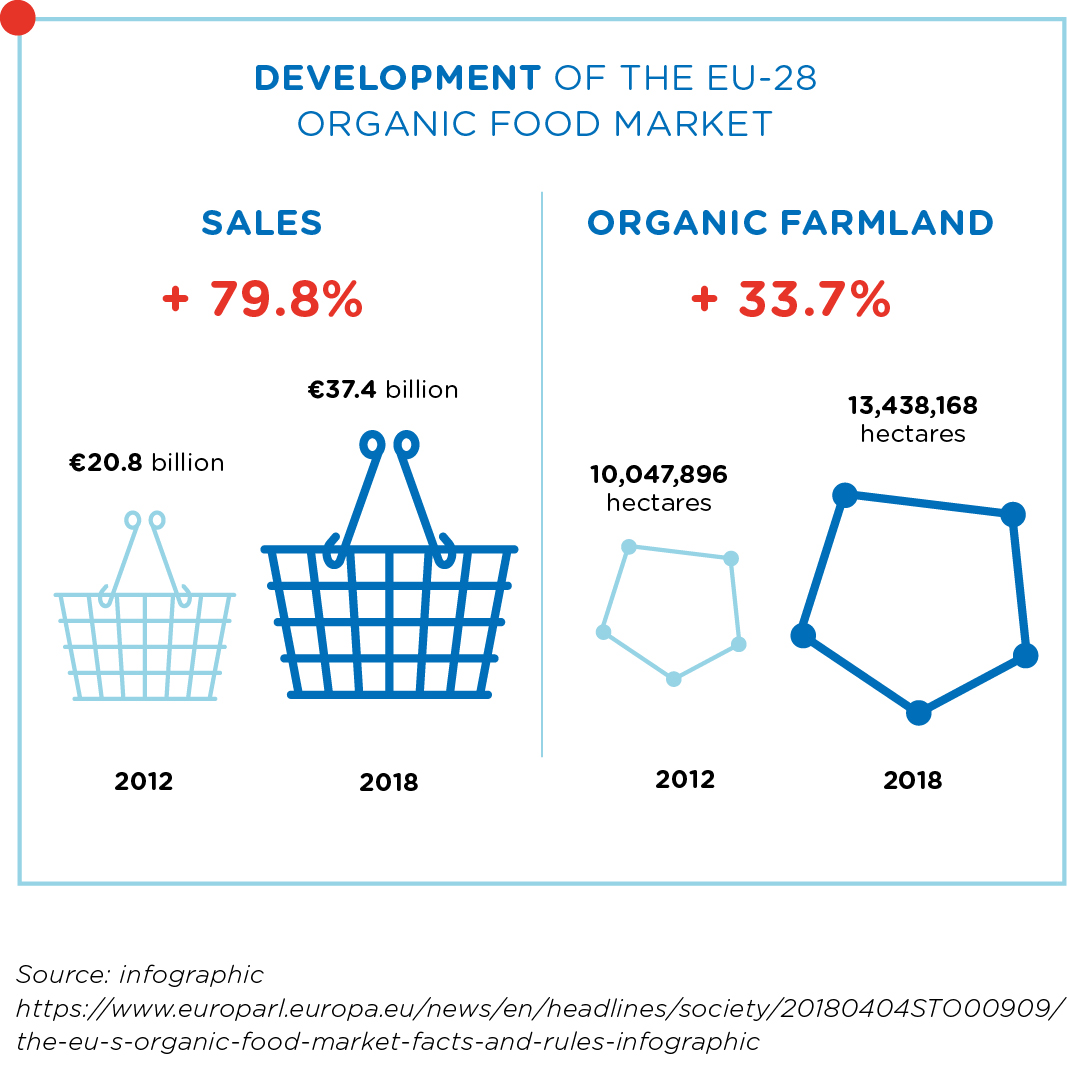What is the future of organic agriculture in EU
The European Commission launched the European Green Deal in 2019 (COM(2019) 640 final) with the ambition to become the first climate neutral continent by 2050 and reduce by 2030 already with 55% the production of greenhouse gas emissions compared to 1990.

A large investment plan to make this transition happen has been voted for. This plan also will have major impact on farming and animal husbandry. One of the Commissions ambitions is to increase the surface of organic farmland in the EU from 7.5% (2018) up to at least 25% by 2030. They will focus on stimulation of both supply and demand for organic products while maintaining consumer trust. The action plan will complement the new legal framework for organic agriculture (Regulation (EU) 2018/848) coming into application on the 1st of Jan. 2022. This responds to the growing societal demands for quality food produced with high environmental, biodiversity and animal welfare standards (see overview of ‘the organic food market’). The increase in organic land use is in conjunction with other EU-targets set in the Farm-to-Fork and Biodiversity Strategies like the reduction of the use and risk of pesticides with 50% and the dedication of 10% of the agricultural area to high-diversity landscapes.
We believe this policy will boost the production of organic food and feed and will have a major impact on how food in general will be produced in the EU. Koudijs has obtained since 2019 the organic certification of his premix plant (Veghel) and produces organic certified premixes for poultry, pigs and ruminants. We are happy to share our knowledge and experience with you and discuss how we can support your business

